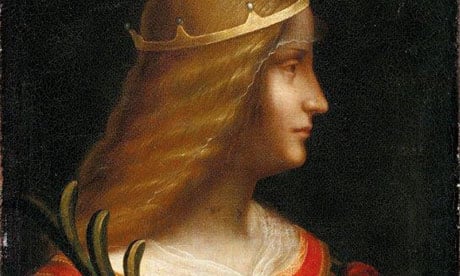Law & Politics
$170 Million Leonardo Da Vinci Seized from Swiss Bank Vault
Authorities allege the long-lost painting was smuggled out of Italy.

Authorities allege the long-lost painting was smuggled out of Italy.

Lorena Muñoz-Alonso

Swiss authorities have seized a long-lost portrait attributed to Leonardo da Vinci from a bank vault in Lugano, Corriere della Sera reports. They followed orders of the Italian authorities, which claimed it had been illegally removed from Italy. The painting, which measures 61 x 46.5 centimeters, is valued between €120–150 million.
The lost portrait of the Marchesa of Mantua Isabella d’Este had become a legend of sorts for many art historians, some even doubting its very existence. There are 23 genuine, fully accepted da Vinci artworks in the world, so a positive attribution to da Vinci would have an extraordinary impact on the history of art.
The oil painting is thought to be the final version of a pencil sketch of the marchesa that Da Vinci drew in 1499, which hangs in the Louvre Museum in Paris. Both portraits are strikingly similar, featuring a gentle and enigmatic smile that many have likened to the Mona Lisa.
The missing masterpiece was first discovered in October 2013 in a private collection of 400 artworks kept by an Italian family in a Lugano bank. At the time, the family asked not to be identified. The Italian authorities had been alerted a few months before that the painting had been sold and that it was subsequently moved to Switzerland without the required export license.
According to Corriere della Sera, after seeing da Vinci’s drawing, the marchesa, a hugely influential female figure at the time, asked the artist to produce an oil version. But da Vinci embarked shortly after on the large-scale, lost painting The Battle of Anghiari (1505) and, then, the Mona Lisa (1503-17) so, for centuries, art historians believed the Old Master did not complete the task.
“There are no doubts that the portrait is the work of Leonardo,” Carlo Pedretti, professor emeritus of art history and an expert in Leonardo studies at the University of California, told the Italian paper upon the work’s discovery in 2013. “I can immediately recognize da Vinci’s handiwork, particularly in the woman’s face.”
Carbon dating and pigment tests done at the time seemed to corroborate Pedretti’s thesis. However, Martin Kemp, professor emeritus of the history of art at Trinity College in Oxford and a renowned da Vinci expert, raised doubts about the attribution at the time.
One of the problematic aspects is the painting’s medium. The oil portrait of Isabella d’Este is painted on canvas, whereas Leonardo preferred working on wooden boards. “Canvas was not used by Leonardo or anyone in his production line,” Kemp told the Telegraph in 2013. “Although with Leonardo, the one thing I have learnt is never to be surprised.”
According to experts, a strong contestant for the painting’s author is Gian Giacomo Caprotti, who started working for Da Vinci as a child and is rumored to have become his lover.
The seized painting follows a series of discoveries that are shedding new light in our understanding of da Vinci’s life and oeuvre (see Secrets of Da Vinci’s Lady with an Ermine Finally Revealed, Da Vinci Restoration Project Reignites Conspiracy Theories, Why Was Da Vinci’s Self-portrait Hidden from Hitler?, Was the Mona Lisa Leonardo’s Mother and a Chinese Slave?, and Authenticity of Leonardo’s Virgin of the Rocks Under Scrutiny).
Update: see Scholar Denies Authenticating ‘Lost Leonardo’ Found in Swiss Vault